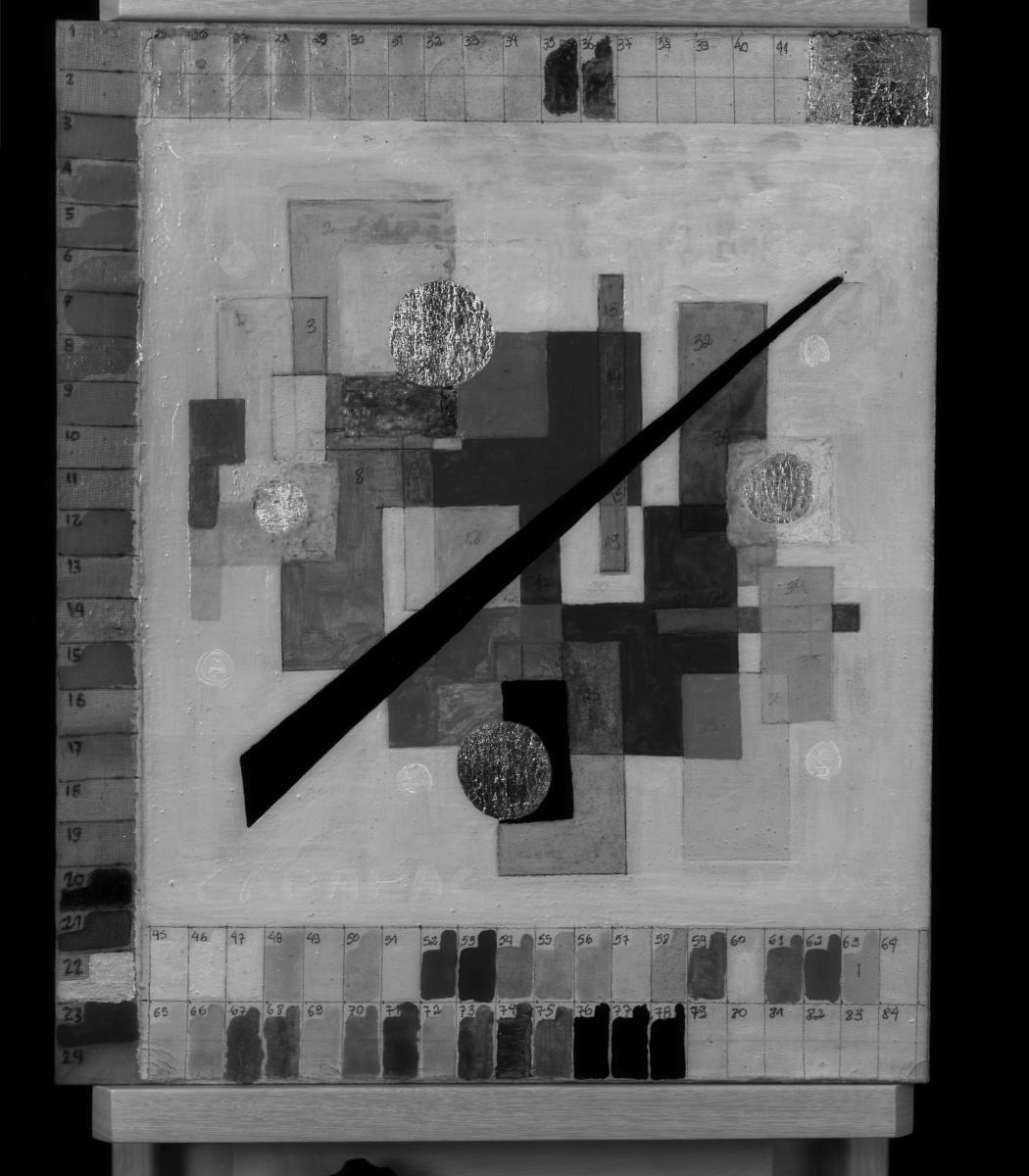Infrared Reflectography

Image: CAMPOS, P.H.O.V
The Near Infrared Reflectography (NIR) is a non-destructive optical technique in which the image is acquired by a digital camera with CCD sensor and an IR filter coupled to the lens. This technique is used to study underlying drawings, that is, the first traces of the artist before the layers of paint are applied. It is also useful to reveal pentimenti, retouching areas and forgery.
Image: CAMPOS, P.H.O.V
Application of the Infrared Reflectography technique in the work produced by the restorer Marcia Rizzo in 2009, using pure pigments, metallic inks and varnishes, presented at Interdisciplinary Theme School "Characterization and Dating of Cultural Heritage Materials (CADAPAC)", organized for the Brazilian Center of Physical Research (CBPF / MCT) and the Centre de Recherche et de Restauration des Musées de France (C2RMF), in the context of the Year of France in Brazil. The work was produced with different overlaid materials to enable different analysis methodologies, simulating the analysis difficulties of objects of historical and cultural heritage.

Image: CAMPOS, P.H.O.V
Compared to visible light image, you can note traits and small numbers made with coal in the image, which then were overlaid by the paint:

Image: CAMPOS, P.H.O.V

Image: CAMPOS, P.H.O.V